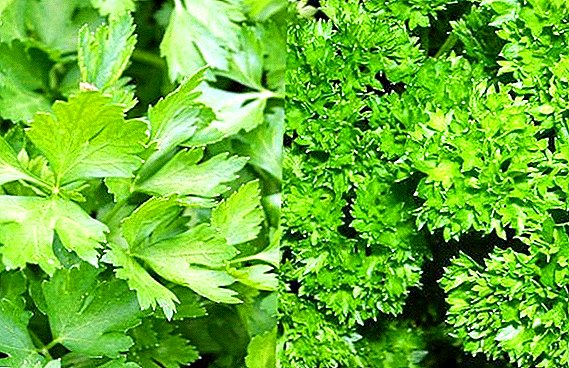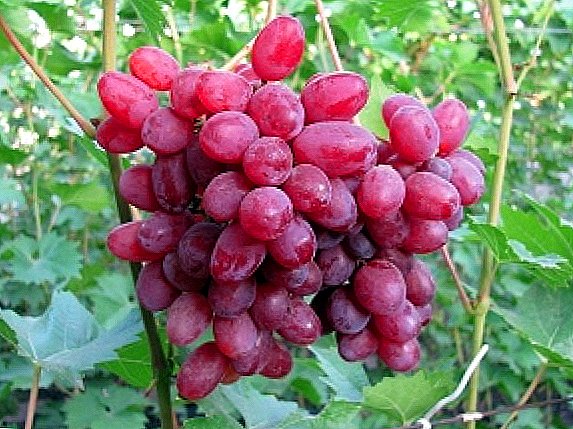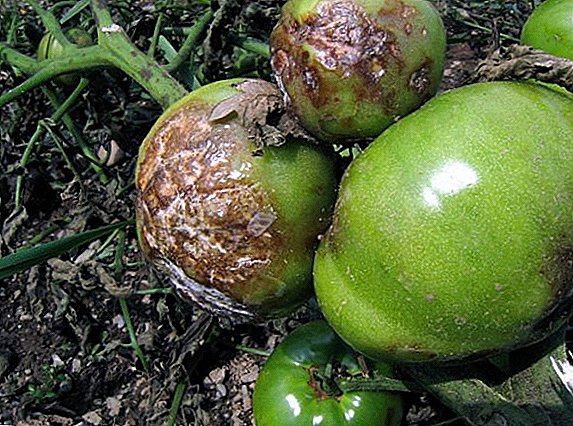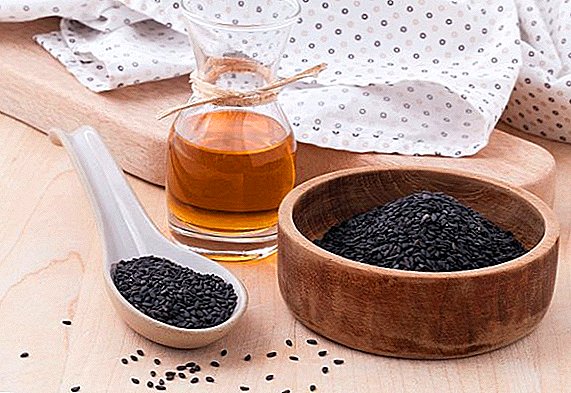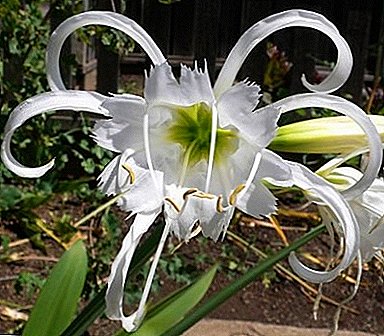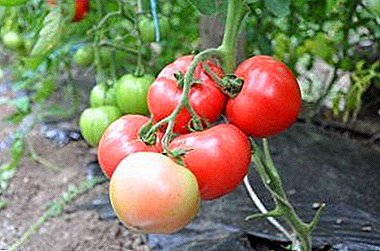 If you belong to the number of people whose mood can improve a beautiful flower, you will be very pleased to get acquainted with streptokarpus.
If you belong to the number of people whose mood can improve a beautiful flower, you will be very pleased to get acquainted with streptokarpus.
This loving care plant will thank you for a gorgeous bloom from early spring to early summer.
Brief description of the flower
Streptokarpus is one of the most elegant representatives of the Gesnerian family, known to flower growers for indoor plants such as epification, gloxinia, azalea, and many others. Care and requirements for the maintenance of this plant are the same as for most of the Gesneriaceae.
This is a fairly voluminous bushy plant with elongated sheets of saturated but pure green color. Sheets can be up to 20 cm in length, so that its contents will require a large pot and enough space.
The streptokarpus flower deserves special attention: these are very beautiful terry, semi-double or regular bells from 2 to 9 cm in diameter. The color gamut of streptokarpus is simply the widest - from ordinary monochromatic colors to an ombré and various patterns. It blooms just as wildly as it grows, and about one hundred flowers can grow on one adult bush. In this case, the smaller the flower - the more of them in one inflorescence. The flower body is located on a long pedicel that rises above the foliage.
In the natural environment, the flowering period falls in the spring-summer period, but at home there are no clear boundaries between the flowering and the rest periods. By prolonging the day by artificial means, using a lamp or a lamp, for example, it is possible to achieve flowering all year round.
Did you know? The genus Streptocarpus is one of the most numerous. In nature, there are about 100 of its natural varieties, from which breeders have bred more than 1000 hybrids.
The easiest way to reproduce - the division of the bush
The most suitable for streptokarpus reproduction at home is carried out by dividing the bush. As the name implies, the division is not a full-fledged reproduction, but rather, the seating of one large shrub over several flowerpots.
This method is applicable mainly to large overgrown plants. By itself, division is an integral part of care for streptocarpus and is carried out at least once every 2-3 years. Neglect of this rule most often leads to two types of consequences:
- streptokarpus grows excessively and begins to fade in a small flowerpot due to lack of nutrients;
- growing streptokarpus repeatedly transplanted into a larger pot. Soon this leads to the fact that the plant ceases to bloom, because the flower stalks can no longer break through the veil of leaves.

Terms for breeding
For the streptocarpus flower, reproduction in spring and summer is preferred. This is a time of high activity of metabolic processes, which is very important for rooting and regeneration of root segments damaged during transplantation.
This rule is not so strict for room streptocarpus, the biorhythms of which are often not tied to the change of seasons. In this case, the division can be made at any convenient time.
The state of dormancy occurs in plants with a decrease in daylight in the autumn-winter period. During this period, any manipulation associated with seeding, division or fertilizer is contraindicated. All that a flower needs at such a time is infrequent watering. The fact that a state of rest has come can be understood by the long absence of flowering.
Fission technology
Dividing a bush is a process that will take some time, so it’s better to stock up on a couple of hours right away, especially if you are doing it for the first time. The division technology includes three stages:
- Identify strong points of growth. It is possible to determine the growth point from a combination of several closely spaced legs of sheets that come out of one bush head. Sheets should be strong, looking from the center outward - on such segments and our bush will share.

- Actually division. Before dividing the bush, it is necessary to remove it from the pot and as much as possible to rid the roots of sticking soil, trying not to damage them.
 The photo clearly shows two strong points of growth, according to them and the need to separate the plant. To do this, you must carefully cut the head of the bush between the right and left parts and separate the parts from each other.
The photo clearly shows two strong points of growth, according to them and the need to separate the plant. To do this, you must carefully cut the head of the bush between the right and left parts and separate the parts from each other. - Lightening bush. At this stage, you need to get rid of old leaves and thickening weak points of growth. Old yellowed leaves that appear after flowering usually do not constitute a problem. They are easily separated from the plant, but the main thing - the need for their removal does not cause doubts in the grower.
But it turns out that young leaves can also harm the bush as a whole. Under the weak points of growth refers to smaller sheets that appear randomly, sometimes from the place where there should be a peduncle.
Such leaves grow as if inside a bush and towards each other, compacting it and making it more vulnerable to a fungal infection, for example. They also interfere with flower stalkers.

Important! Remove weak or old sheets with remnants of peduncles should be along with the neck and its roots.
How to choose the capacity and plant delenki
It all depends on the size of the plant: the more it is - the more space it will need. The plant should have enough soil, and the root system should be freely located in the tank. Basically, disposable containers with a volume of 0.25-0.35 l are used for the seating arrangements.
First, the container is filled with the substrate to about half, after which the root of the plant is lowered there and evenly added dropwise from all sides. At the end, the ground is slightly tamped, but not hard - just to fix the above-ground part of the flower.
Propagation by leaf cuttings
In addition to dividing the streptocarpus bush, it may be reproduced by leaf. Leaf grafting is a difficult and painstaking method that requires patience and a few special skills from the decision maker. The process has several stages:
- Choosing the right sheet.
- Sheet cuttings.
- Rooting.
Reproduction using leaf cuttings, though longer, and more laborious, but allows you to get more plants Zamiokulkas, shefflery, home begonia, sundew
How and when harvesting cuttings
- Select sheet.

- Cuttings.
Streptokarpus is very sensitive to the level of moisture and is susceptible to fungal diseases with improper care - powdery mildew, gray rot, root and stem rot.

Did you know? The ability of rooted cuttings depends on the soil in which the parent plant grows. If it received too much nitrogen, the roots on the cuttings are formed very poorly. A similar effect has an excess of copper in the soil.
- Treatment.
- Selection of soil.
Rooting process
The rooting process is very long and can last up to two months. For comparison, the epistations belonging to the same family take root in the sheet during the week. In addition, rooting should not be allowed to drift, and the container with cuttings requires careful maintenance.
From streptokarpus diseases, florists apply Fitosporin, Fundazol, Trichodermin, Skor
It will be most convenient to build a small greenhouse consisting of a container with cuttings and polyethylene - this will facilitate the care of plants. 
Rules for the care of cuttings:
- Humidity. Before the roots appeared, the cuttings had no specialized organs through which they could absorb water. The process of moisture absorption is performed by the whole body of the leaf, so you need to check that there is enough moisture.
- Shine. Greenhouse with cuttings should be placed in a well-lit place, but not in direct sunlight, otherwise the plant will wither.
- Watering. Water cuttings need about once a week in a special way - along the edges of the tank. This is done for optimal distribution of moisture in the pot.
- Disease. Greenhouse conditions are good for germination, but they are also ideal for the reproduction of harmful bacteria that can destroy the flower at the cutting stage. To prevent the development of pathogenic microorganisms, before planting the substrate is boiled for 3-5 minutes, another method of prevention is weekly spraying the cuttings with bactericides.
Streptokarpus should be protected from the mealybug, spider mite, scythosis, whitefly and thrips.Sprouts are formed from the longitudinal veins on the leaf, but there are rare instances when each vein sprouts, mostly 60-80% germinates.
Planting rooted seedlings
Streptokarpus seedlings have two leaves of unequal sizes. It is necessary to replant when the larger of the leaves reaches a length of at least 3 cm. There are no special requirements for planting. Sapling 2-3 cm long planted in a container with a volume of 150-200 ml. The next transplant is made after the first flowering.
Important! After rooting, streptokarpus grows quickly, but planting a plant with a small root in a large pot can lead to acidification of the soil and the death of the flower.Reproduction, as well as the content of streptocarpus, is a rather laborious exercise, requiring constant participation and some skills. On the one hand, this is a hassle, but on the other - the opportunity to learn something new and try yourself as a grower. As a reward for your efforts, pleasant bonuses in the form of admiring glances of friends and acquaintances are provided to you.



 The photo clearly shows two strong points of growth, according to them and the need to separate the plant. To do this, you must carefully cut the head of the bush between the right and left parts and separate the parts from each other.
The photo clearly shows two strong points of growth, according to them and the need to separate the plant. To do this, you must carefully cut the head of the bush between the right and left parts and separate the parts from each other.
